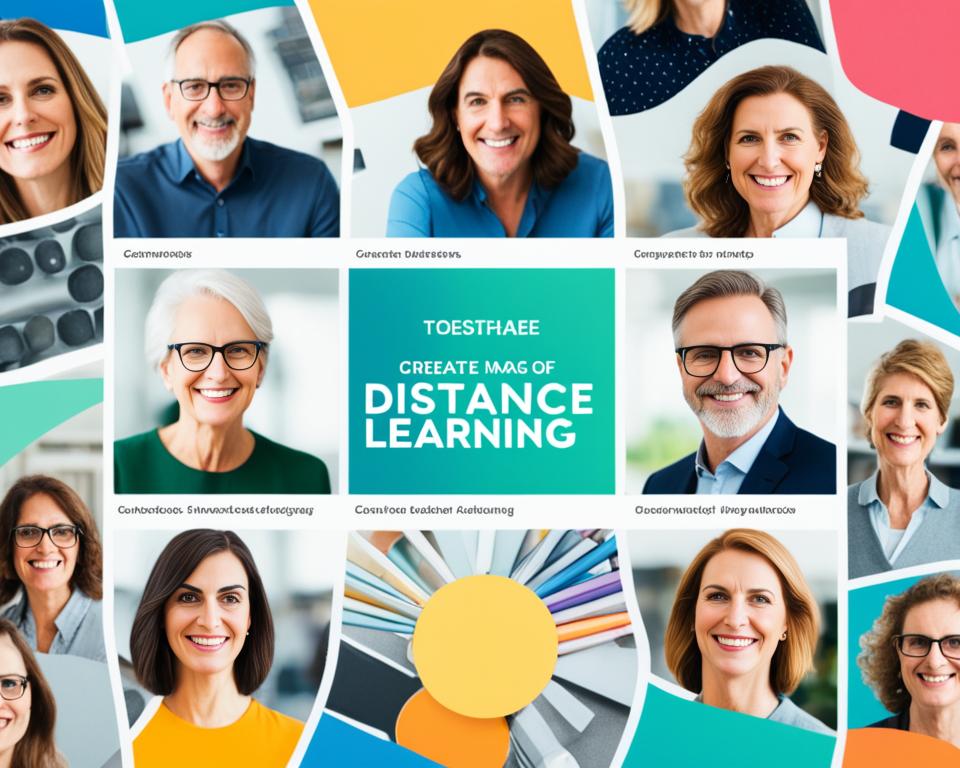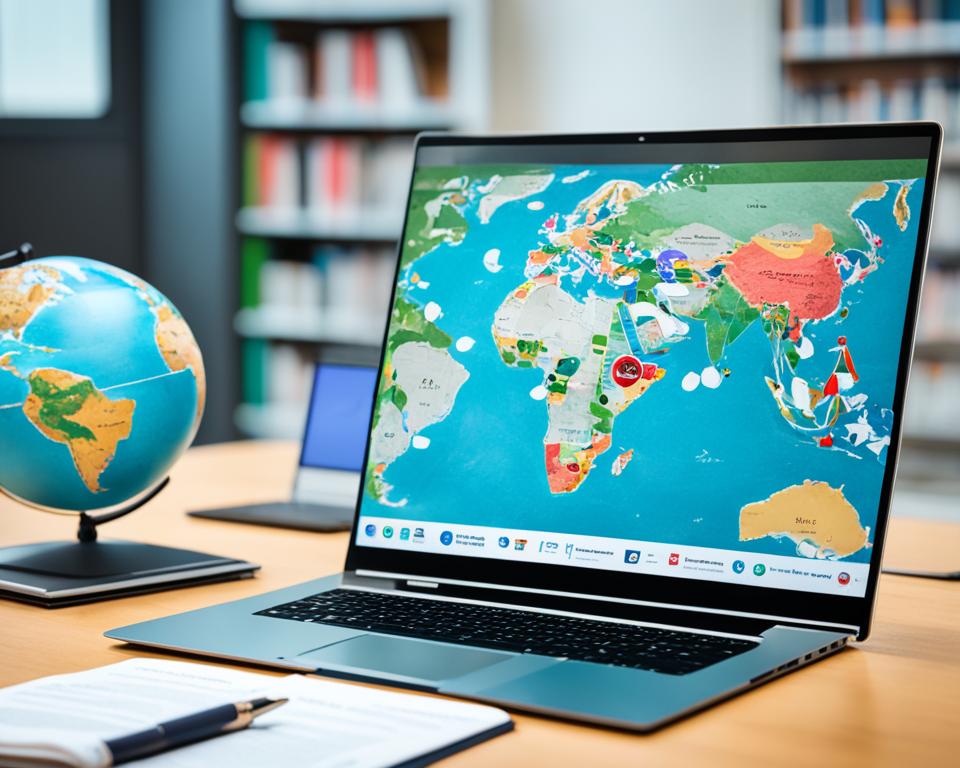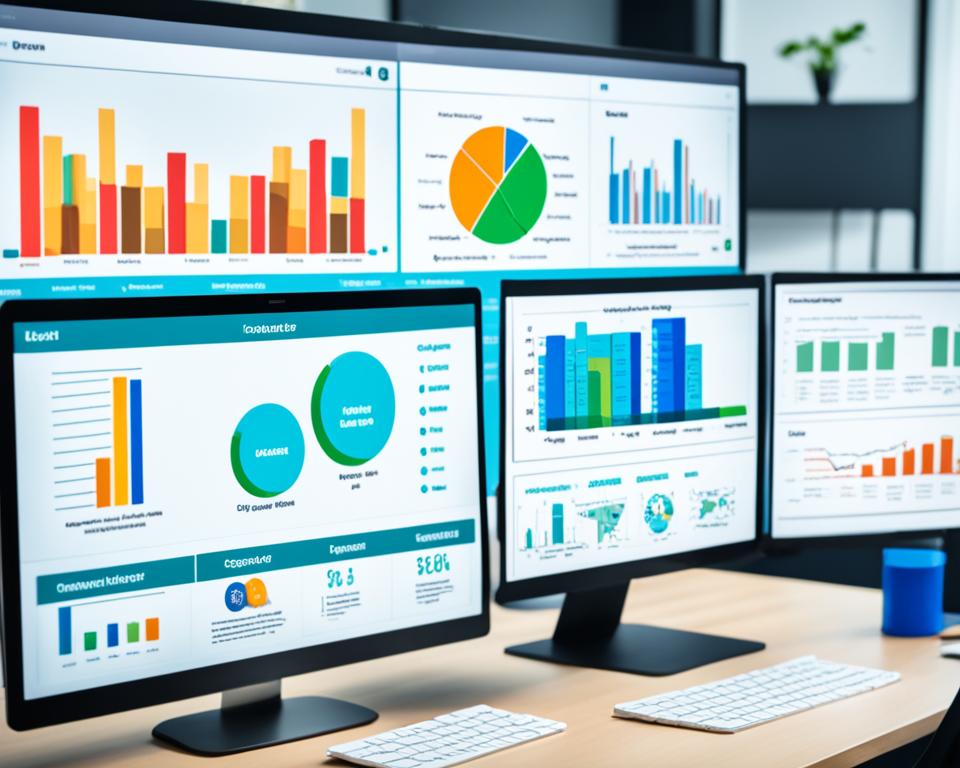Distance learning has revolutionized the world of education, offering a myriad of opportunities for individuals to pursue their educational goals remotely. With the advent of online education, virtual classes, and e-learning platforms, students now have access to a wide range of courses and programs that can be completed from the comfort of their own homes. Whether it’s acquiring new skills, furthering their education, or adapting to the demands of a busy lifestyle, distance learning provides the flexibility and convenience that traditional on-campus education may lack.
One of the key benefits of distance learning is the ability to learn at your own pace. Gone are the days of rigid schedules and fixed class timings. With online courses, students have the freedom to study when and where they want, allowing for a more personalized and adaptable learning experience. This flexibility is particularly advantageous for working professionals, parents, and individuals with other commitments, as it allows them to balance their education with their other responsibilities.
Another advantage of distance learning is the vast array of courses and programs available. Whether you’re interested in digital marketing, healthcare, or computer science, you can find an online course tailored to your specific interests and career goals. This accessibility opens up opportunities for individuals who may not have access to the same range of courses in their local area or who prefer to study from renowned institutions around the world.
Moreover, distance learning often comes at a lower cost compared to traditional on-campus education. With no need for transportation, accommodation, or other associated expenses, students can save money while still receiving a high-quality education. This cost-effectiveness makes distance learning an attractive option for individuals seeking to further their education or acquire new skills without breaking the bank.
Despite its numerous advantages, distance learning does present its own set of challenges. Limited interaction with peers and instructors can sometimes hinder the collaborative learning experience that is often associated with on-campus education. Additionally, distance learning requires a high level of self-motivation and discipline, as students must manage their own time and stay focused on their studies. Furthermore, technology requirements and the absence of hands-on learning experiences can present obstacles that students must navigate.
Key Takeaways:
- Distance learning provides flexibility and access to a wide range of courses.
- It offers the opportunity to learn at your own pace and convenience.
- Distance learning can often be more cost-effective compared to traditional on-campus education.
- Interaction and collaboration may be limited in distance learning, requiring self-motivation.
- Technology requirements and lack of hands-on learning can pose challenges.
Advantages of Distance Learning
Distance learning offers several advantages that make it an appealing option for individuals seeking flexible education opportunities. Here are some key advantages:
- Flexibility: Distance learning provides flexibility for students with work or family obligations. They can complete coursework at their own pace, allowing them to maintain a balance between their personal and professional commitments.
- Access to a Wide Range of Courses: Through distance learning, students have access to a wide range of courses offered by institutions globally. This enables them to choose from a diverse selection of subjects and disciplines, expanding their knowledge and skills.
- Lower Costs: Distance learning can be more affordable compared to traditional on-campus education. With no commuting expenses or additional accommodation costs, students can save money and allocate their resources more efficiently.
- Global Exposure: Distance learning connects students to institutions and educational opportunities around the world. Through virtual classrooms, students can interact with professors and peers from diverse backgrounds and cultures, gaining a global perspective on their studies.
Distance learning offers flexibility, access to a wide range of courses, lower costs, and global exposure, making it an advantageous choice for those seeking flexible education opportunities.
Disadvantages of Distance Learning
While distance learning offers numerous advantages, it also has some disadvantages. It is important for learners to be aware of these potential drawbacks and consider them when choosing their educational path. Understanding the disadvantages can help students make informed decisions and prepare themselves for the challenges they might face.
1. Limited Interaction
One of the main disadvantages of distance learning is the limited interaction with peers and instructors. Unlike traditional on-campus education, where students can engage in face-to-face discussions, collaborate on group projects, and build personal connections, distance learning primarily relies on virtual communication platforms. This can make it challenging for students to establish meaningful relationships and participate in real-time discussions.
2. Self-Motivation and Time Management
Distance learning requires a high level of self-motivation and time management skills. Without the structure and accountability provided by regular class schedules and in-person interactions, students must stay disciplined and manage their own time effectively. It can be easy to procrastinate or become overwhelmed without proper self-motivation and organizational skills.
3. Technology Requirements
To participate in distance learning, students need reliable access to technology and the internet. This can be a disadvantage for individuals who do not have access to sufficient technology or a stable internet connection. Moreover, learning how to use various online platforms and software tools can pose a learning curve for some students, adding an additional layer of complexity to their educational experience.
4. Limited Hands-On Learning
Hands-on learning experiences, such as laboratory experiments or practical training, are often limited in distance learning. While technological advancements have enabled virtual simulations and remote laboratories, they may not fully replicate the hands-on experiences available in traditional on-campus settings. This limitation can impact certain fields of study that heavily rely on physical practice and application of knowledge.
“Distance learning provides flexibility and access to education, but it is important for students to consider the potential disadvantages. Limited interaction, self-motivation, technology requirements, and limited hands-on learning are some of the challenges that distance learners may encounter.”
Despite these disadvantages, distance learning continues to be a viable option for many individuals seeking accessible education. By understanding the drawbacks and actively adapting to overcome them, students can still achieve their educational goals through distance learning.
What is Distance Learning?
Distance learning refers to any form of education that does not require physical presence in a classroom setting. It has evolved from traditional correspondence courses to modern online learning platforms. Distance learning utilizes technology to deliver educational materials, lectures, and assignments to students remotely. It offers flexibility in terms of location and time, allowing students to engage in learning from anywhere at any time.
Distance learning has transformed the way individuals access education, breaking down geographical barriers and providing unprecedented opportunities for students around the world. Through online learning platforms and e-learning tools, distance learning offers a wide range of courses and programs tailored to individual interests and career goals.
Whether it’s a student pursuing higher education while working or an adult seeking to expand their knowledge, distance learning provides the flexibility for individuals to learn at their own pace. Traditional learning methods often require strict adherence to schedules and location-based constraints, while distance learning allows for personalized learning experiences that adapt to each learner’s unique circumstances.
“Distance learning allows students to access quality education without the limitations of physical presence, providing a gateway to lifelong learning and professional growth.”
Distance learning enables students to access educational materials and resources remotely, interact with instructors and peers through online platforms, and submit assignments electronically. It promotes independent learning and self-motivation, as students take responsibility for managing their time and staying engaged in the learning process.
In addition to online learning platforms, traditional institutions have also embraced distance learning by offering hybrid models that combine online courses with limited in-person interactions. This blended approach provides the opportunity for hands-on experiences and face-to-face interactions while still benefiting from the flexibility and convenience of distance learning.
As technology continues to advance, distance learning will only become more accessible and immersive. Innovations such as virtual reality and artificial intelligence are already shaping the future of education, enhancing the remote learning experience and creating interactive virtual classrooms.
Distance learning is a powerful tool that empowers learners of all ages and backgrounds to pursue education and achieve their goals. With its flexibility, convenience, and global reach, distance learning has become an integral part of the educational landscape, offering endless possibilities for personal and professional growth.
Types of Distance Learning
Distance learning offers various methods for students to engage in remote education. Let’s explore the different types of distance learning:
Synchronous Learning
In synchronous learning, students and instructors interact in real-time through video conferencing platforms. This allows for live lectures, discussions, and immediate feedback. Students can actively participate and engage with their peers and instructors, simulating the traditional classroom experience.
Asynchronous Learning
In asynchronous learning, students have the flexibility to complete coursework at their own pace. They access educational materials, lectures, and assignments asynchronously, meaning that they are not required to be present online at specific times. This allows students to balance their studies with other commitments, making it convenient for those with hectic schedules.
Video Conferencing
Video conferencing is a key component of distance learning, facilitating real-time collaboration and communication among students and instructors. It enables interactive discussions, group projects, and virtual presentations, promoting engagement and fostering a sense of community in an online setting.
Hybrid Distance Education
Hybrid distance education combines elements of both traditional in-person learning and online education. It blends face-to-face classroom instruction with virtual components, providing students with a flexible and personalized learning experience. This approach allows students to benefit from the convenience of online learning while still having opportunities for in-person interactions.
Open Schedule Online Courses
Open schedule online courses provide learners with the freedom to start and complete their studies at any time. Students have access to course materials and resources, allowing them to progress through the content at their preferred pace. This type of distance learning is ideal for individuals who require a high level of flexibility in their learning schedule.
Fixed-Time Online Courses
Fixed-time online courses follow a specific schedule with set class times, similar to traditional on-campus courses. Students engage in live lectures or tutorials at predetermined times, enabling real-time interaction with instructors and classmates. This format provides structure and accountability to learners while still offering the convenience of studying remotely.
Each type of distance learning has its own advantages and suits different learning preferences and circumstances. Institutions and instructors often utilize a combination of these methods to create diverse and engaging online educational experiences.

| Type of Distance Learning | Description |
|---|---|
| Synchronous Learning | Real-time interaction through video conferencing platforms |
| Asynchronous Learning | Flexibility to complete coursework at your own pace |
| Video Conferencing | Real-time collaboration and communication among students and instructors |
| Hybrid Distance Education | Combines in-person and online learning components |
| Open Schedule Online Courses | Flexible learning with the freedom to start and complete studies at any time |
| Fixed-Time Online Courses | Scheduled classes with set class times for real-time interaction |
Who Uses Distance Learning?
Distance learning is embraced by a wide range of learners, catering to both traditional and non-traditional students, working professionals, and individuals seeking personal development. It offers valuable alternatives to those who may not have access to traditional on-campus education, enabling them to pursue higher education and acquire new skills. The popularity of distance learning has soared, especially with the widespread adoption of online education during the global pandemic.
1. Traditional and Non-Traditional Students
Distance learning attracts both traditional students, such as recent high school graduates, and non-traditional students, who may be older adults returning to education or balancing work and family commitments. It provides flexibility and convenience, allowing them to tailor their learning experience to their specific needs and circumstances.
2. Working Professionals
Distance learning accommodates the busy schedules of working professionals who aspire to enhance their knowledge, skills, and qualifications. With flexible course structures and online resources, working professionals can pursue higher education or gain additional certifications without disrupting their careers.
3. Individuals Seeking Personal Development
Distance learning serves as a gateway for individuals seeking personal development opportunities. Whether it’s learning a new language, acquiring creative skills, or exploring personal interests, distance learning platforms offer a diverse array of courses and programs to foster personal growth and enrichment.
Distance learning caters to a diverse audience, promoting inclusivity and equal access to education for individuals from all walks of life.
As distance learning continues to evolve, it breaks down barriers, connecting learners worldwide and creating a vibrant community of knowledge seekers. The convenience and flexibility of distance learning have revolutionized education, making it accessible to a broad spectrum of individuals.
Next, we will delve into the recognition of distance learning degrees and the importance of accreditation.
Distance Learning and Recognition
Distance learning degrees hold significant recognition and accreditation from reputable institutions and governing bodies. This recognition ensures that the quality of education and degrees offered through distance learning programs meets specific standards, establishing their academic credentials.
Accreditation plays a vital role in guaranteeing the credibility and value of distance learning degrees. It assures prospective students and employers that the education provided by these programs is of high quality, equivalent to that of traditional on-campus degrees.
Students who earn degrees through distance learning often benefit from the recognition and portability of their academic credentials. These degrees can typically be utilized for further education, career advancement, or professional opportunities, allowing individuals to expand their knowledge and improve their prospects.
Importance of Accreditation
Accreditation ensures that distance learning programs meet certain standards, providing students with dependable educational experiences and outcomes.
Accredited distance learning programs undergo rigorous evaluation processes to ensure that their faculty, curriculum, and support services meet industry-relevant standards. The accreditation process validates the quality and integrity of these programs, safeguarding the interests of students and employers.
Choosing an accredited distance learning program is crucial for individuals seeking recognition and credibility for their degrees. Employers and educational institutions are more likely to accept degrees earned from accredited programs, as they understand and value the rigorous standards upheld by these institutions.
Recognizing Accredited Programs
Prospective students can verify the accreditation status of distance learning programs by referring to official accrediting bodies such as the Higher Learning Commission (HLC), Accrediting Council for Independent Colleges and Schools (ACICS), or Distance Education Accrediting Commission (DEAC). These bodies evaluate and accredit institutions and programs based on their commitment to quality education.
Furthermore, individuals can consult directories and databases provided by accreditation agencies to access a comprehensive list of accredited distance learning programs. These resources assist students in making informed decisions and choosing reputable institutions that offer accredited degrees.
The Value of Accredited Distance Learning Degrees
Accredited distance learning degrees hold the same value and recognition as their on-campus counterparts. They emphasize the importance of academic credentials and reflect the commitment and dedication put forth by students pursuing education through remote learning.
Obtaining a recognized degree through distance learning demonstrates one’s ability to manage time effectively, exhibit self-discipline, and master course materials independently. These qualities contribute to the development of skills highly sought after by employers in today’s competitive job market.
An Accredited Distance Learning Degree Opens Doors
Whether individuals are seeking to advance their careers, transition into new fields, or pursue higher education, an accredited distance learning degree can serve as a valuable qualification. Recognized by employers, academic institutions, and professional organizations, these degrees provide diverse opportunities for growth and success.

An accredited distance learning degree opens doors to further education, career advancement, and professional opportunities, providing individuals with the recognition they deserve.
The Future of Distance Learning
The future of distance learning holds immense potential with the continuous advancements in technology. Virtual reality (VR), artificial intelligence (AI), and interactive platforms are revolutionizing the way education is delivered remotely. These innovative technologies are reshaping the landscape of online learning, making it more personalized, immersive, and interactive for learners.
Virtual reality allows students to experience educational content in a simulated environment, providing a hands-on and engaging learning experience. For example, medical students can virtually dissect a human body or architecture students can explore virtual buildings, enhancing their understanding and practical skills.
Artificial intelligence plays a vital role in distance learning by providing personalized learning experiences. AI-powered algorithms can analyze students’ learning patterns, identify areas of weakness, and tailor educational content accordingly. This adaptive approach helps students learn at their own pace and focus on areas where they need improvement.
“The integration of virtual reality and artificial intelligence in distance learning will transform education, making it more interactive, engaging, and effective.” – Dr. Emily Johnson, renowned education expert.
Interactive platforms are also shaping the future of distance learning. These platforms facilitate real-time collaboration and interaction among students and instructors, fostering a sense of community and peer-to-peer learning. Students can participate in discussions, group projects, and engage in live virtual classrooms through video conferencing.
Future Possibilities
As technology continues to evolve, the possibilities for distance learning are limitless. Here are some future developments:
- Integration of augmented reality to provide real-time overlays of digital information on the physical world, enhancing practical learning experiences.
- Development of advanced learning analytics tools to track and analyze students’ progress, providing personalized recommendations for improvement.
- Increased use of gamification elements to make learning more interactive, enjoyable, and effective.
| Advancements in Technology | Impact on Distance Learning |
|---|---|
| Virtual Reality | Enhanced hands-on learning experiences through immersive simulations. |
| Artificial Intelligence | Personalized learning, adaptive content delivery, and intelligent assessment. |
| Interactive Platforms | Promotion of collaboration, real-time interaction, and community engagement. |
| Augmented Reality | Overlay of digital information on the physical world, enhancing practical learning. |
| Learning Analytics | Data-driven insights for personalized recommendations and continuous improvement. |
The future of distance learning is bright, driven by advancements in technology and the ever-growing demand for flexible and accessible education. As virtual reality, artificial intelligence, and interactive platforms continue to evolve, they will reshape distance learning, making it more engaging, effective, and personalized for learners worldwide.
Video Conferencing/Live Virtual Training
Video conferencing is a transformative method of distance learning that brings the seminar or classroom experience directly to the virtual space. It enables participants to engage in live virtual training sessions, facilitating collaborative learning through interactive presentations and discussions. With the help of video conferencing platforms, real-time communication and interaction among participants are made possible, creating an immersive and engaging learning environment.
Through video conferencing, learners can connect with instructors and peers from any location, eliminating geographical barriers that may have otherwise restricted their access to education. This technology empowers participants to actively contribute to discussions, ask questions, and receive instant feedback, mirroring the dynamics of a traditional face-to-face classroom setting.
Moreover, video conferencing allows for the seamless integration of various multimedia resources, such as video demonstrations, interactive slideshows, and real-time whiteboarding. These features enhance the learning experience by catering to different learning styles and promoting visual and auditory engagement. Learners can witness practical demonstrations, view visual aids, and actively participate in collaborative activities, fostering a deeper understanding of the subject matter.
By capitalizing on video conferencing for live virtual training, organizations and educational institutions can offer comprehensive and interactive learning experiences to a diverse range of learners. The versatility of this technology transcends traditional barriers, transforming online meetings and classrooms into vibrant spaces for collaborative learning and knowledge exchange.
Video Recordings
Video recordings are a valuable component of distance learning that effectively captures learners’ attention and enhances the effectiveness of remote training. Incorporating visual learning through video lectures and demonstrations is an effective way to engage learners and facilitate their understanding of complex concepts.
The human brain processes visual information faster and retains it longer than textual information. By utilizing instructional videos, learners can benefit from a visually stimulating and immersive learning experience.
Video recordings offer a dynamic medium for instructors to demonstrate procedures, tasks, or concepts. Learners can replay and refer back to the video content whenever necessary, reinforcing their understanding and promoting mastery of the subject matter.
Whether it’s a step-by-step demonstration of a scientific experiment, a virtual tour of historical landmarks, or a simulation of real-life scenarios, video recordings provide a valuable resource for learners to engage in visual and experiential learning.
Visual learning is enhanced through instructional videos, bringing key concepts to life and making them more accessible and memorable for learners.
Self-paced Learning
Self-paced learning is an effective and flexible approach to distance learning that empowers learners to take control of their educational journey. With self-paced learning, students have the freedom to progress through the course materials at their own pace, accommodating their individual learning styles and preferences. This type of learning allows individuals to set their own schedules and allocate time according to their availability and personal commitments.
One popular form of self-paced learning is microlearning, which breaks down complex subjects into bite-sized modules or courses. These focused and concise learning units allow learners to dive deep into the key elements of a subject, making it easier to absorb and retain information. Microlearning provides learners with the opportunity to learn on-demand, accessing relevant materials whenever they need them.
Self-paced learning promotes independent learning, as it gives students the autonomy to explore topics of interest and delve deeper into areas that require additional understanding. Learners have the freedom to revisit concepts they find challenging, spending more time on those areas until they feel confident. This personalized learning experience caters to the diverse needs and learning styles of individuals, ensuring a more effective and engaging educational journey.
By embracing self-paced learning, students can take full advantage of the benefits of distance learning. They can learn at their own speed, engage with educational resources on-demand, and tailor their learning experience to meet their unique needs and preferences.
Explore the table below for a comprehensive comparison of self-paced learning, microlearning, personalized learning, and independent learning:
| Self-paced Learning | Microlearning | Personalized Learning | Independent Learning |
|---|---|---|---|
| Allows learners to progress at their own pace | Focuses on bite-sized courses | Adapts to individual learning needs | Fosters self-reliance and autonomy |
| Offers flexibility and freedom | Enables deep understanding of key concepts | Tailors learning experience to individual preferences | Promotes self-discipline and time management skills |
| Provides on-demand access to learning materials | Breaks down complex subjects into manageable units | Encourages exploration of topics of interest | Encourages critical thinking and problem-solving |
Gain control of your learning journey with self-paced learning, microlearning, personalized learning, and independent learning. Experience the flexibility and freedom to learn at your own pace, focusing on key concepts, and tailoring your educational experience to suit your needs.
Conclusion
The advent of distance learning has truly transformed the field of education, offering individuals unprecedented flexibility, a plethora of course options, and the opportunity to pursue higher education without the constraints of physical presence. While there are both advantages and disadvantages to distance learning, the ever-evolving landscape of online education, coupled with technological advancements, opens up endless possibilities for the future.
Distance learning provides learners with the flexibility to study at their own pace, making it an ideal option for those with existing work or family commitments. With access to a wide range of courses from institutions worldwide, students can expand their knowledge and acquire new skills, all from the comfort of their own homes. Additionally, the affordability of distance learning compared to traditional on-campus education makes it highly accessible for a wider range of individuals.
The potential for distance learning is vast, especially in light of technological advancements. As virtual reality, artificial intelligence, and interactive platforms continue to evolve, online education is becoming increasingly personalized and engaging. This personalized approach to education enables learners to have immersive experiences and fosters their overall development.
As the demand for flexible and accessible education continues to grow, distance learning will play a vital role in shaping the educational landscape. The ability to pursue higher education remotely offers individuals from all walks of life the opportunity to enhance their skills, pursue new career paths, and contribute to their personal and professional growth. With its numerous benefits and the promise of innovation on the horizon, distance learning is set to continue revolutionizing education for years to come.
FAQ
What are the advantages of distance learning?
Distance learning offers flexibility, access to a wide range of courses, lower costs, and global exposure.
What are the disadvantages of distance learning?
The disadvantages of distance learning include limited interaction, the need for self-motivation, and technology requirements.
What is distance learning?
Distance learning refers to any form of education that does not require physical presence in a classroom setting. It utilizes technology to deliver educational materials to students remotely.
What are the types of distance learning?
The types of distance learning include synchronous learning, asynchronous learning, video conferencing, hybrid distance education, open schedule online courses, and fixed-time online courses.
Who uses distance learning?
Distance learning is utilized by a diverse range of learners, including traditional and non-traditional students, working professionals, and individuals seeking personal development.
Are distance learning degrees recognized?
Yes, distance learning degrees are recognized and accredited by reputable institutions and governing bodies.
What does the future hold for distance learning?
The future of distance learning is promising, with advancements in technology expected to enhance the online learning experience, making it more personalized and interactive.
What is video conferencing in distance learning?
Video conferencing is a popular form of distance learning that simulates the seminar or classroom environment online, enabling real-time communication and collaboration among participants.
How do video recordings enhance distance learning?
Video recordings in distance learning capture learners’ attention and enhance the effectiveness of remote training, providing visual information that is processed and remembered faster than text.
What is self-paced learning?
Self-paced learning is a flexible approach to distance learning where learners can progress at their own pace and access materials on demand. It promotes independent learning and accommodates various learning needs and preferences.





